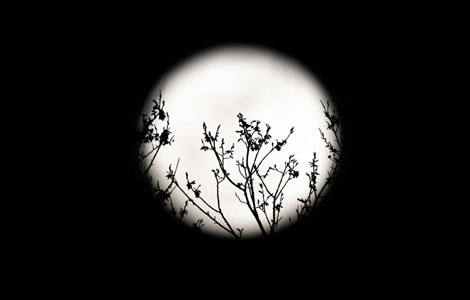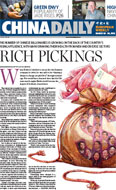Heritage
Bright hues, vivid paintings in Yuan Dynasty porcelains
Updated: 2011-03-15 07:55
By Cheng Anqi (China Daily)
Editor's Note: Every week we look at a work of art or a cultural relic that puts the spotlight on China's heritage.
Of the various types of chinaware, Yuan Dynasty (1271-1368) blue-and-white porcelain is the rarest.
"Only about 100 pieces have been found (in China), with a large number believed to be overseas," says Ma Weidu, a renowned porcelain connoisseur and founder of Beijing's Guanfu Museum, Chaoyang district, noted for its collection of exquisite antiques and porcelains.
|
|
Yuan Dynasty blue-and-white porcelain is famous for its bright hues and vivid paintings, while those with patterns of characters and stories are considered the most precious.
It was mostly associated with aristocracy as it commanded a very high price.
The less expensive vases tend to be stocky with a wide opening, although one type called mei ping, has dominated since the Song Dynasty (AD 960-1279).
It is famous for its small opening, short neck, wide shoulder and narrow bottom. A good example of this kind of chinaware is the Xiao He Chasing After Han Xin in the Moonlight blue-and-white vase of the Yuan Dynasty.
This iconic vase is 44.1 cm tall, with a 5.5 cm opening, and a 13 cm wide bottom.
The picture on the vase portrays the story of historical figures Xiao He and Han Xin, frequently depicted in local folk operas and folk art works as heroes in peasant uprisings of the Qin Dynasty (221-206 BC).
Xiao and Han are vividly painted on the belly of the vase, with flowers, trees, rocks, and other decorative patterns occupying the rest of the space.
Xiao He is seen wearing a putou (a special kind of hat for officials and academics in ancient China) and light armor, and is seated on a galloping horse.
On the other side of the vase, Han Xin, wearing a robe, is shown taking a horse to water.
In recent years, Yuan Dynasty blue-and-white porcelains have become sought-after items at art auctions in and outside China.
|
|
For instance, the Gui Gu Xia Shan Tu blue-and-white porcelain jar from the Yuan Dynasty, sold for 230 million yuan ($34 million) at a Christie's auction in 2005 in London.
The Xiao He Chasing After Han Xin in the Moonlight vase was unearthed more than 10 years after the jar was found.
The "decoration on the vase is multi-layered and unique, emanating brilliant artistic quality, and is far superior to the jar", Ma Weidu says.
Serving as a burial artifact, the vase is believed to be from the Muying Tomb, from Guanyin Mountain in Jiangning county, Jiangsu province.
The tomb was robbed in early 1949.
Archaeologists excavated the site a year later, to find some artifacts missing.
In 1950, the vase appeared at an antique market in Nanjing, capital of Jiangsu province. Chen Xinmin, a local collector recognized it as soon as he saw it. He bought it with 10 gold bars. He hid it at home until 1953 when the Nanjing Cultural Relics Trustees called for relics.
It is now in the collection of Nanjing Museum.
E-paper

City of Joy
Welcome to the 'world of smiles' where life meanders slowly.
Debate on nuclear power revived
The future is now
Common approach
Specials

Beloved polar bear died
Berlin's beloved polar bear Knut, an international star died Saturday.

Panic buying of salt
Worried Chinese shoppers stripped stores of salt on radiation fears.

'Super moon'
The "Super Moon" arrives at its closest point to the Earth in 2011.


